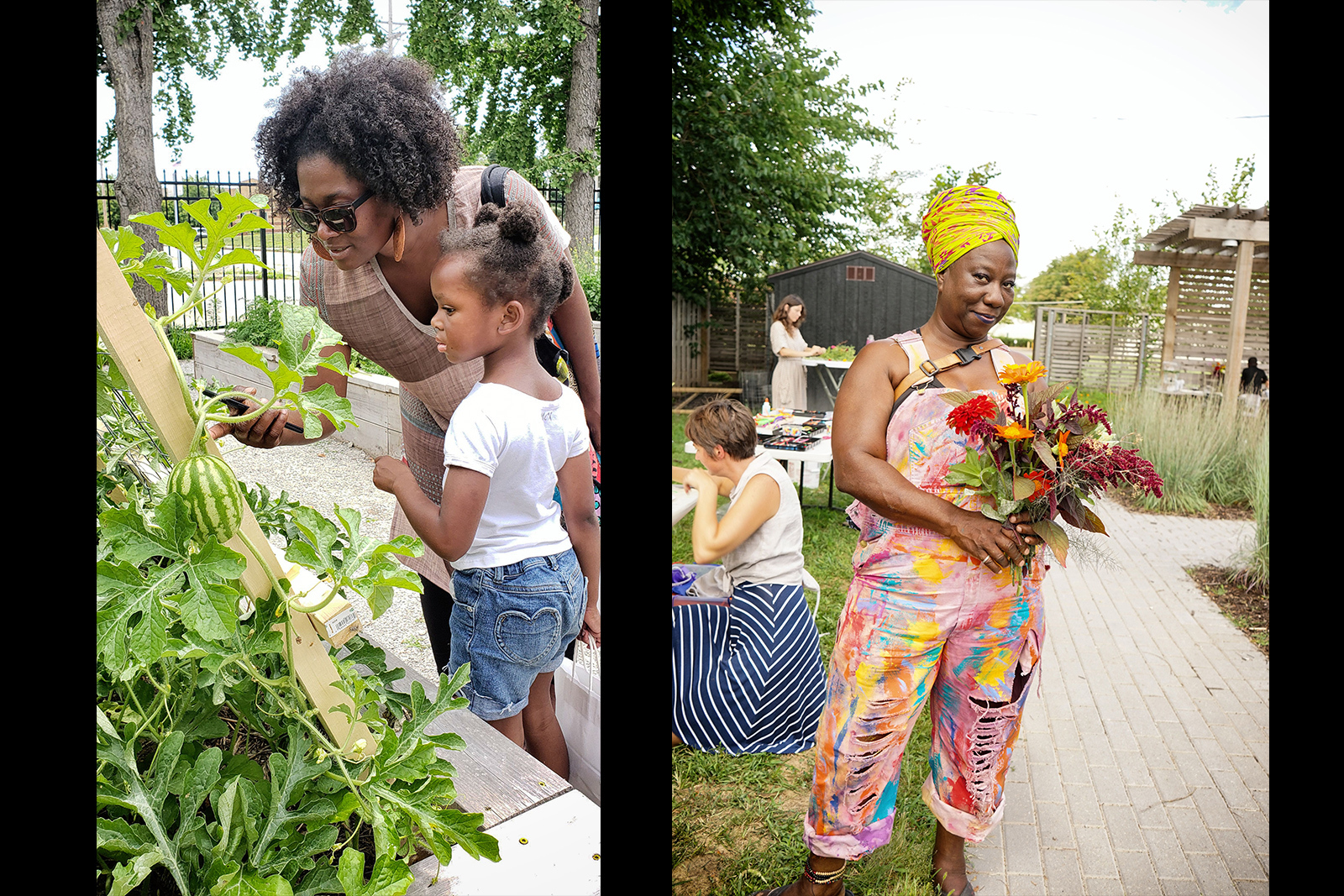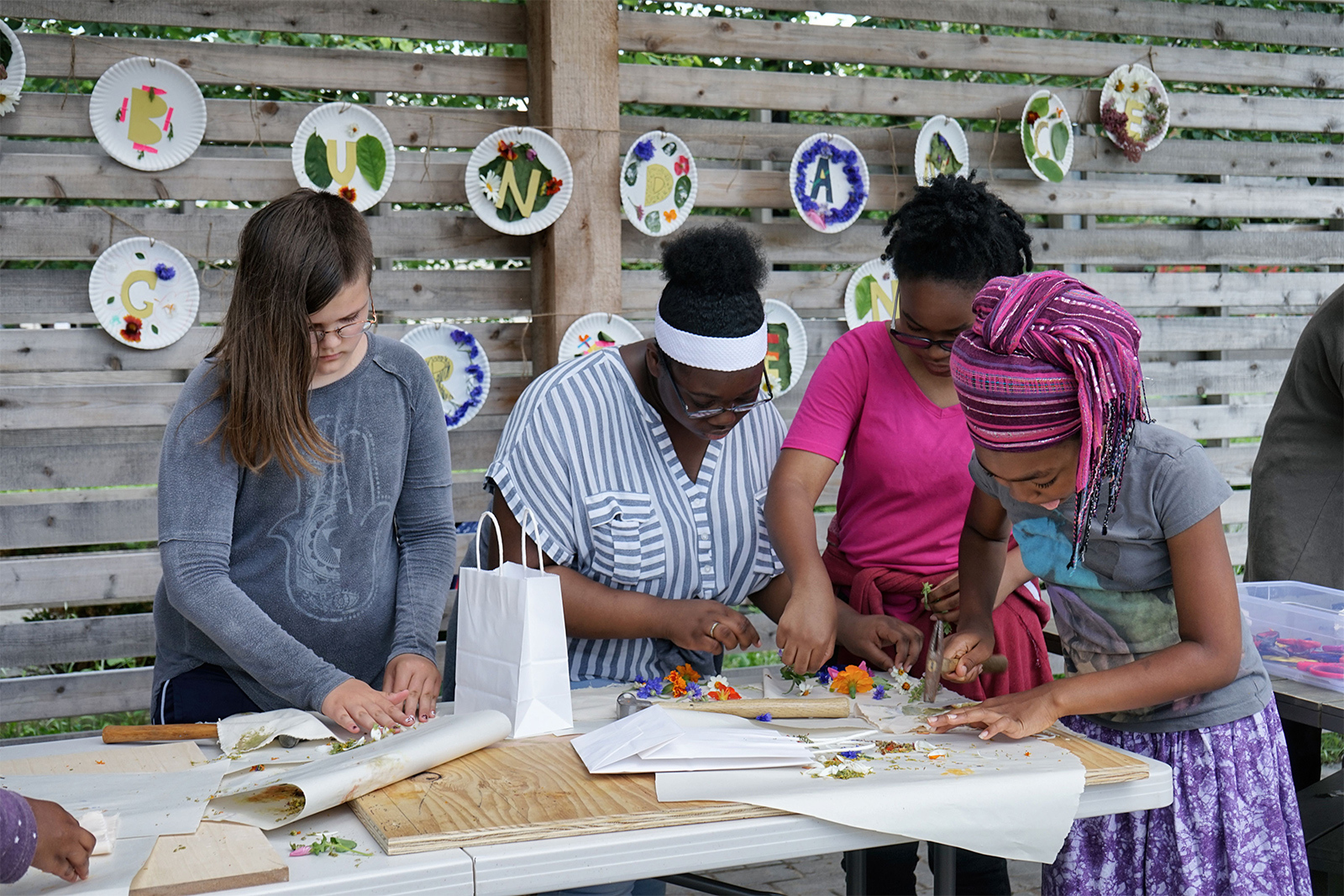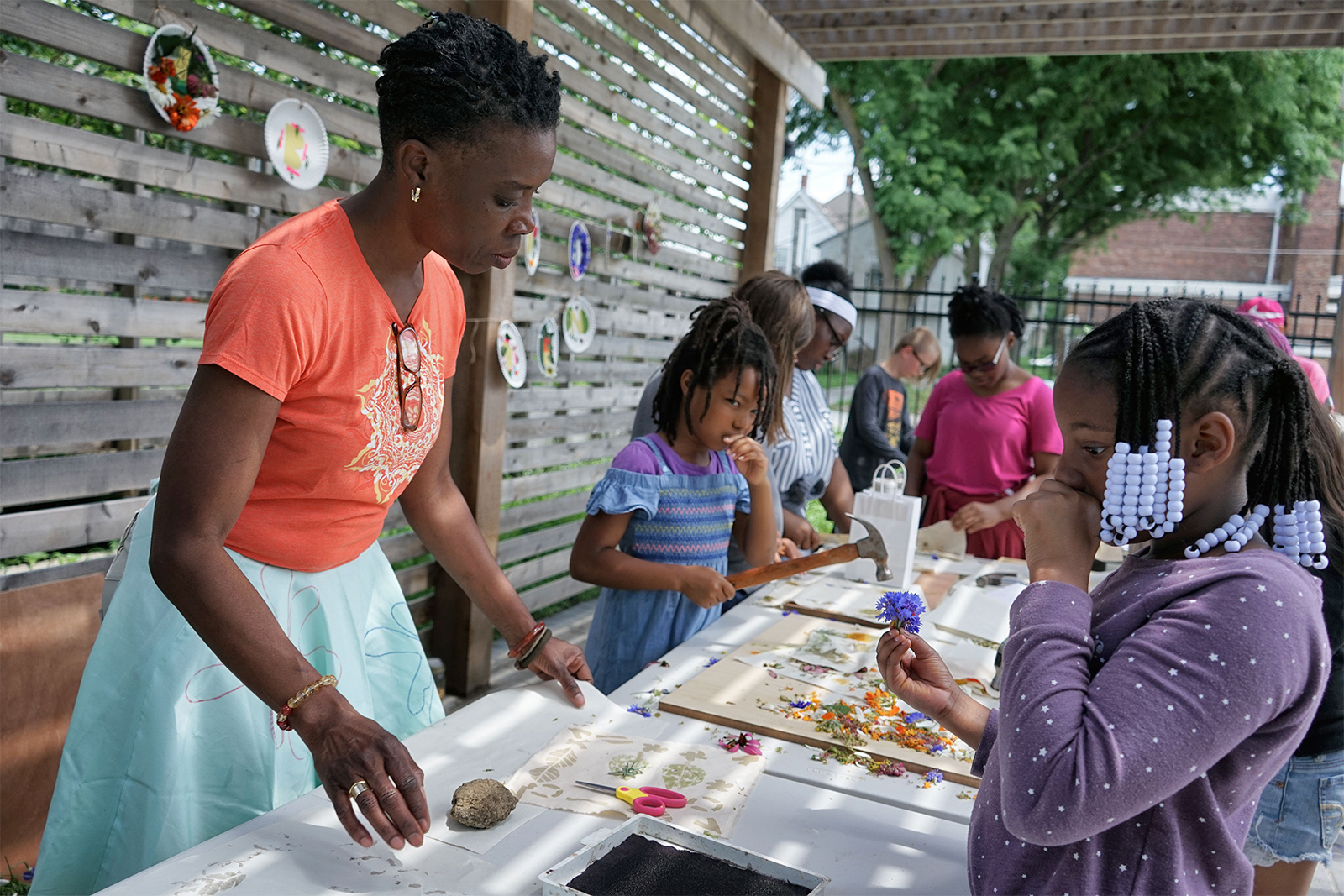
Abundance Garden
Natural Dye Workshop Coming Up!
We're hosting a two-part workshop that gives participants the chance to learn the basics of natural dyeing using marigold petals from our very own Abundance Garden. Don’t miss out on this opportunity to indulge in your creativity and learn a fun skill that you can do at home!
November 13th and 20th
5:30-7:30 p.m.

The Union’s Abundance Garden includes 960 square feet of raised garden beds, a geodesic dome greenhouse for seedlings and off-season growing, a small fruit-tree orchard, composting facilities, a performance space, and an outdoor classroom used for community events and The Union’s Youth Engagement programs.
We’re incredibly grateful to The Peter Kiewit Foundation, The Lozier Foundation, The Whole Kids Foundation, and Mulhall’s for their generosity & support in the development of the Abundance Garden!
Our mission also greatly benefits through our ongoing partnerships with community collaborators: City Sprouts, Big Garden, No More Empty Pots, Sunflower Cooperative, Free Farm Syndicate, and Blazing Star Seed Co-Op. Sharing produce, programming, plants, and seeds enables us to continue addressing food deserts in our communities while advancing not just food security, but also food sovereignty. By empowering individuals and fostering collaboration, we move closer to a future where everyone has access to the resources they need to thrive.
Take an aerial tour of our beautiful Abundance Garden
Sow & Grow Saturdays
10 a.m. to Noon
Every Saturday at the Abundance Garden, we gather not just to garden, but to grow together—sharing food, learning new skills, and connecting with the earth and one another. It’s a space where stories, culture, creativity, and wellness meet. Whether you’re new to gardening or a seasoned grower, the garden club is a place to learn by doing. From composting to cooking, from painting to planting, each week offers hands-on opportunities to expand your knowledge and skills.
Come for the free, fresh produce. Stay for the people, the stories, and the grounding joy of being outside. Our Sow & Grow Saturdays nourish not just the body, but the soul—with shared food, shared wisdom, and purpose.
UPCOMING SOW & GROW TOPICS
Sept. 27: Seed Saving Workshop
Parking is in our main lot. There is additional parking available in our East lot at 2220 Willis Ave., next to the Abundance Garden.
Volunteer Days
Tuesdays and Thursdays, 9:30-11:30 a.m.
We invite budding garden enthusiasts and seasoned growers alike to join us at the Union for a volunteer work day every Tuesday and Thursday. The goal of our Abundance Garden is to enhance access to fresh produce, promote education and arts engagement, and foster community building in our neighborhood. Volunteer time in the garden will primarily consist of weeding, watering, pruning, and various other tasks as needed.
If you like to enjoy the sunshine and build camaraderie with your community, this is the place for you!
Things to keep in mind:
- Please dress comfortably for the weather, NO flip flops.
- We recommend bringing your own water bottles, but we will have water available as well.
- We've got you covered with bug spray, sunscreen, and garden gloves.

Growing Plants in Community
We aim to create intentional systems of support within beds that not only group plants together harmoniously and maximize space, but also create plant communities and combinations that encourage and reinforce growth. For example, we are planning to grow a three sisters garden of corn, beans and squash. Indigenous Communities have planted these three crops together for centuries to take advantage of their mutually beneficial properties. The corn provides stalks that the beans can climb so they don’t have to compete with the squash vines. The beans fix nutritious nitrogen to the soil and support the corn during winds while the squash plants shade the soil and conserve moisture.
Our plan also includes a bed that holds marigolds, collards and tomatoes. The climbing tomato plants will provide shade to the collards while the collards will in turn create a thick canopy over the soil, preserving soil moisture and blocking weed growth. The scent of both the collards and marigolds will repel harmful pests from the tomato plants.
We also aim to create plant communities and systems of support by rotating the type of crops planted in the beds. We made sure to move plants in the brassica family, like kale, into beds that brassicas were not grown in the previous year. We did the same sort of rotation with plants in the nightshade family, like tomatoes, peppers and eggplants. These plants ask for a lot of nutrients, so we have replaced them with things like beans that are nitrogen fixers, and pull nutrients up from deep in the ground. We aim to be intentional in thinking about where and next to what plants will grow the best in the garden.
Planting intentionally allows us to grow plant communities that are more self-sustaining and more likely to give us a better harvest–consequently allowing us to share more produce and create stronger links to our community. We are also looking to plant crops that have run out quickly at the produce stand–those extra popular items! We hope to offer more greens and tomatoes (green and ripe) this year.
Seed Saving
Another important development is our seed saving work with Free Farm Syndicate and Blazing Star Seed Co-Op. We are participating in coordinated growing in order to participate in a broader seed-saving initiative in Omaha. Through cooperative seed saving, we are increasing capacity for self-sustainability and growing inter-communal connections in Omaha.This year we are specifically growing King of the North bell peppers and Mary Reynolds tomatoes to save seed from. To learn more about seed saving and getting involved visit our garden or check out Free Farm Syndicate’s page!
Garden Views

Abundance Garden in full bloom after our first summer of growth, September 2018










Thank You Conagra Brands Foundation
The Abundance Garden and its contribution to food security in North Omaha is generously supported by Conagra Brands Foundation.
Learn MoreThank You Omaha Community Foundation
The Abundance Garden is partly funded by the 2022 Fund for Omaha from the Omaha Community Foundation.
Learn More
Thank You Hillside Solutions
The Abundance Garden is supported by Hillside Solutions and Soil Dynamics' Compost Club, transforming residential food waste from the Omaha-area into nutrient dense soil used in our garden and others around the city.
Learn More